The tea we drink is derived from Camillia sinensis, an evergreen tree of the Theaceae family. As Camillia sinensis is indigenous to China and parts of India, each culture has a claim to the discovery of this popular beverage.
India's legend originates with a saintly priest named Bodhidharma. About 1,900 years ago, the eventual founder of Zen Buddhism was in the fifth year of a seven-year sleepless contemplation of Buddha. Finding himself dangerously close to falling asleep, Bodhidharma snatched some leaves from a nearby bush and chewed them. He was immediately revived. Bodhidharma turned to these leaves—the leaves of a wild tea tree—whenever he again felt drowsy, and was thus, according to legend, able to complete his seven years of meditation.
Tea's popularity as a wholesome, invigorating drink first spread throughout China and Japan. The first book on tea, Ch'a Ching, was written by the Chinese author Lu Yu in the eighth century. A definitive, poetic manual that covers the cultivation and production of tea, it is credited with helping tea become China's national drink long before it was ever tasted in the West.
The story of tea is as old as nature itself; we have been drinking tea on these shores for over 350 years. But, it took an exciting turn in the year 1837, when the Tetley brothers went into business in Yorkshire, England. This is the brief history of tea, Tetley and the tea bag.

The Chinese Emperor Shen Nung is sitting under a large tea plant (Camellia sinensis) while his servant boils drinking water. Some leaves from the tree blow into the water, an accidental infusion takes place, and the cup of tea is born. Well, that’s the legend, anyway!

By now, tea is the national drink of China. It's manufactured in a brick form: the tea leaves are pounded and pressed into a brick-shaped mold and then dried.

In the 1600s, the British East India Company had a monopoly on importing goods from outside Europe. Tea’s popularity was spread by sailors bringing home tea as gifts.

Unknown in Britain, Chinese tea is brought over by sailors and first served up in London’s coffee houses.

Portuguese princess (and tea addict), Catherine of Braganza, marries King Charles II and soon establishes tea as a fashionable drink for the very wealthy. Tea was regarded and traded as an expensive commodity for the affluent.

The East India Company places its first order for tea to be imported into Britain.

Britain is now obsessed with tea, but taxes put it out of reach. 5 million lbs of tea is sold legally – but 7 million lbs is smuggled.

By this point, tea is the favored drink of Britain’s lower classes, in spite of the huge taxes it carries. These taxes are reduced in the middle of the 19th century.

The Boston Tea Party: when British ships arrive in Boston, a band of men board the ships, split open its cargo of 342 chests and throw the lot into the sea. It was a protest over the British taxes.
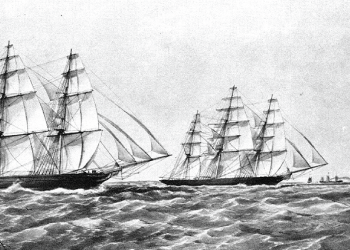
The famous clipper races begin in China and go down the China Sea, across the Indian Ocean, around the Cape of Good Hope, up the Atlantic, past the Azores, and into the English Channel. The clippers are then towed up the River Thames by tugs, and the first ship to throw its cargo onto the docks is the winner.
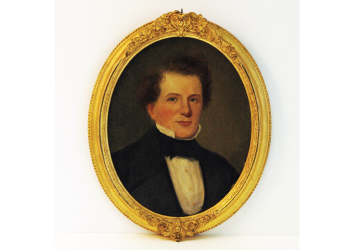
Joseph and Edward Tetley start to sell salt in Yorkshire, England. In time, they add tea to their repertoire. Good move.

The Tetley brothers move to Cullum Street, London, just yards from the tea auction rooms. They eventually part ways, and Joseph unveils the newly named “Joseph Tetley & Co., Wholesale Tea Dealers”.

Tetley took his son Joseph "Junior" into partnership. Business flourished, and the company extended its services to include blending and packing.

The company was ready to take its next major step-an agreement with American agents to distribute Tetley's teas throughout the United States.
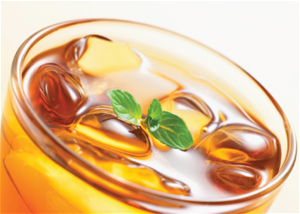
At the St. Louis World’s Fair of 1904, a heat wave leads tea planter Richard Blechynden to add ice to his tea. It causes a sensation, and iced tea is born.
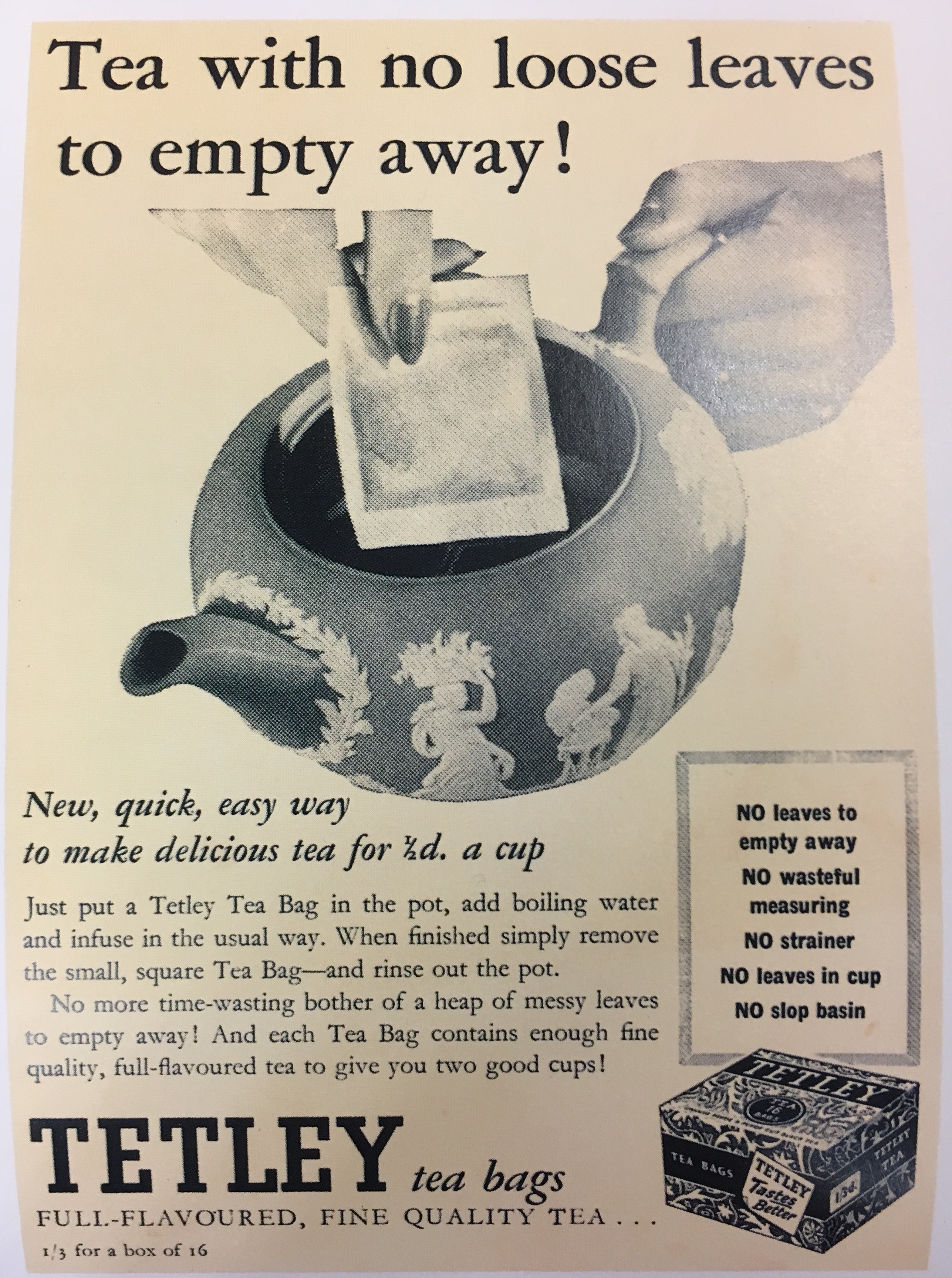
A happy accident. New York tea merchant, Thomas Sullivan, sent samples of tea to customers in small silken bags, which people wrongly assumed were supposed to be placed into tea pots, rather than emptying out the contents. Consequently, the much-loved tea bag was born!

Tetley’s British representative, TI Tetley- Jones, goes to America and brings back the idea of the tea bag.
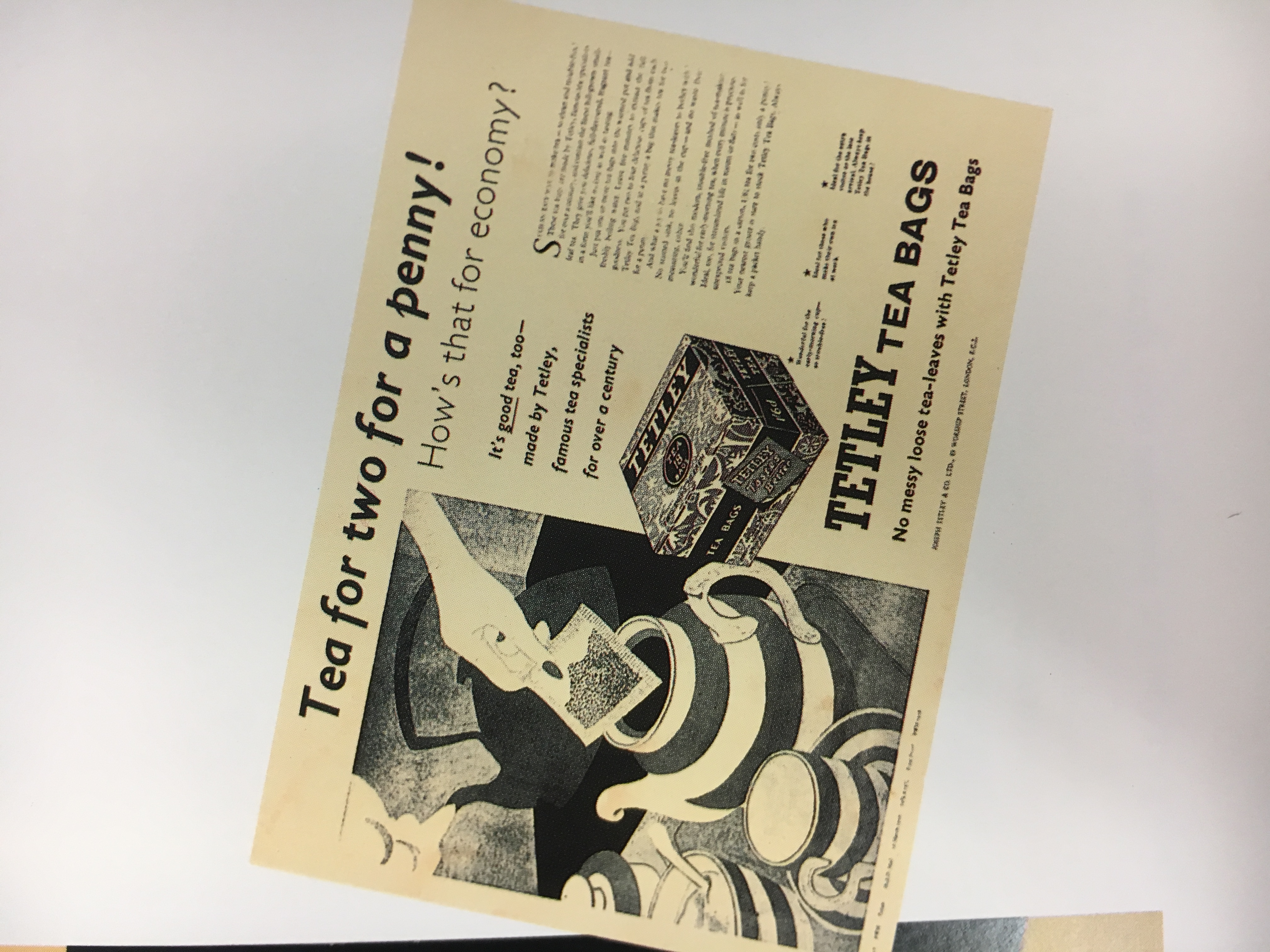
In 1940, the first Tetley tea bag machines, known as the “Grey Ladies”, stitch 40 tea bags a minute for export.

To great public joy, World War Two tea rationing is finally lifted, and the foundations are laid for Tetley to bring the tea bag to the UK market for the first time.
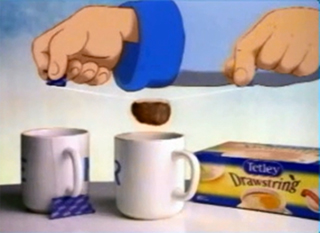
Tetley introduces the Drawstring tea which was designed to help give the same great taste as our original tea bag, just without the mess.

By now, Tetley tea bag sales have soared to 5,000 tons a year.
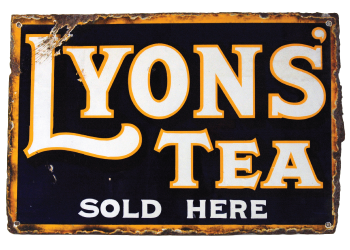
J. Lyons of Corner House fame acquires Tetley. Lyons Tetley is formed.
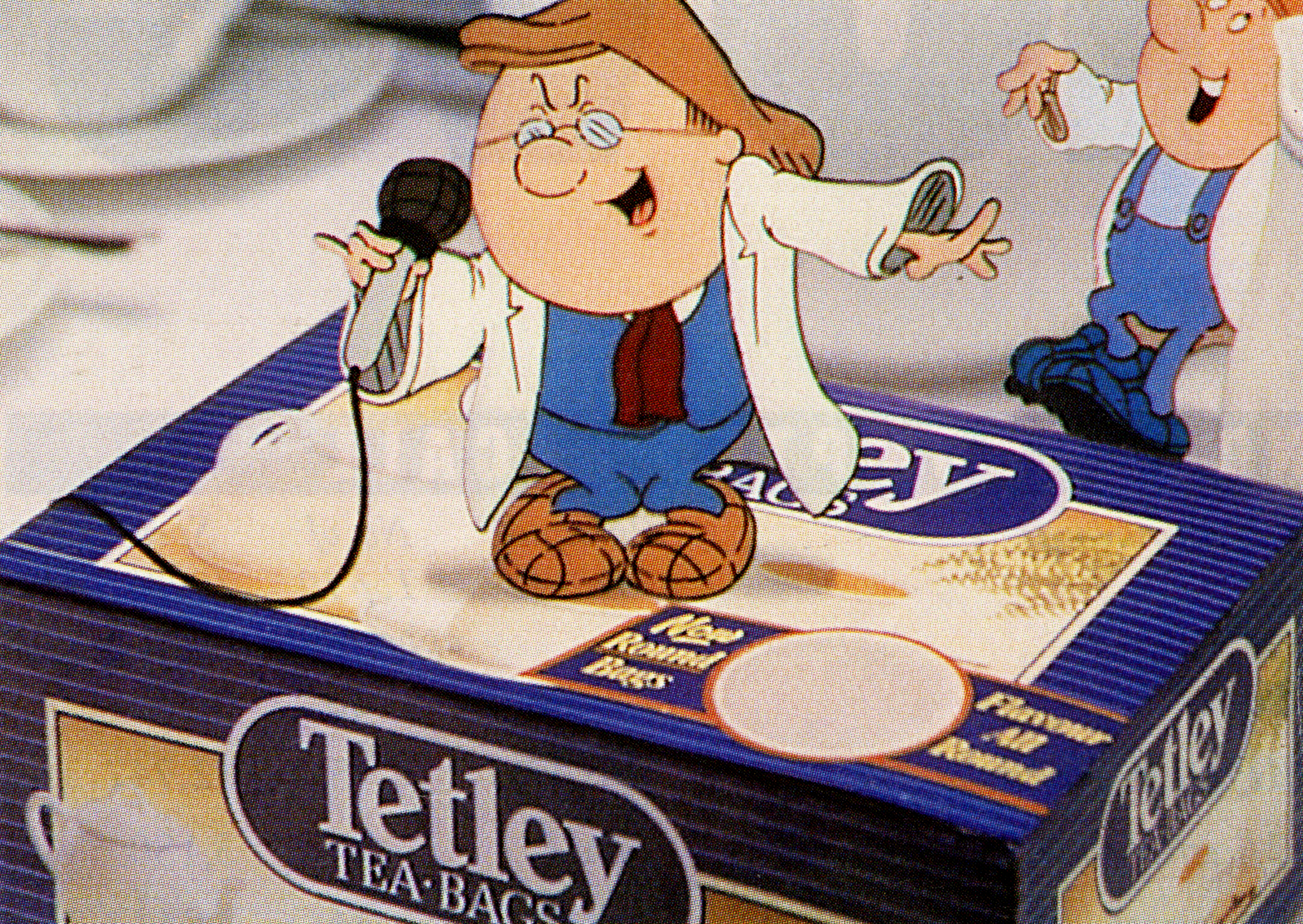
An Elvis-inspired Gaffer celebrates the launch of the Round Bag. By 2004, the Tetley range of teas has grown to offer fruit and herbal infusions, green teas, and specialty blends… and we’re still updating and innovating today.

A delicious blend of Asian and African green tea leaves, sourced from high altitude plantations, gives Tetley’s Pure Green its smooth, mellow taste.

Carefully sourced from the Cedarberg region of South Africa and perfect for our caffeine-free tea lovers, Tetley launched Pure Redbush.
Every week, Tetley buys one million kilos of tea for making countless cups of Tetley tea that the world enjoys every day.

Innovative and health beneficial, Tetley launched a Super Green tea range, with added vitamins to help support immune systems or to help reduce tiredness and fatigue.

Tetley unveiled a brand refresh with a new logo across all products and communications.

Gordon Bruce (@gordonbruceart) shared a “brewtiful” piece of art featuring the Tetley van.
Boston Throws a Tea Party
Tea's popularity in the American colonies followed a growth pattern similar to England's, but dissension was brewing. Britain's practice of levying high tariffs on imported goods, often as a means of financing military operations, outraged the colonists. Subject to England's laws but with no say in the British Parliament, their resentment became a slogan: “No taxation without representation.” The Tea Act of 1773 gave the East India Company the right to ship tea directly from China, making it impossible for many American importers to stay in business. This act, along with the bitterness of unfair taxation, drove a band of angry patriots to gather at Griffin's Wharf on December 16, 1773, and engage in an action that would forever be known as the Boston Tea Party. The men, disguised as Native Americans, boarded three East India Company ships, tore open all cargos of tea and threw them into Boston Harbor. Similar acts of rebellion followed in other American cities, and patriotic citizens turned from tea to coffee to register their disgust with British rule. This event, and others like it, would ultimately lead to the Revolutionary War.
Clipper Races
America staked its own claim to the Chinese tea trade in the 19th century and soon found itself at war with England in a much more sporting fashion: racing clipper ships. The East India Company had for years relied upon big, slow ships to transport merchandise. Newly independent America, looking to make a splash in international trade, designed a new, more streamlined vessel that could carry more tea at a much greater speed. The first of these clippers (to “clip” is to maximize speed from wind) was launched in New York in 1845. It immediately halved the journey time from the Far East to London and allowed American crews to sell their cargos at better prices, which in turn created even more demand for tea in America.
Today, tea is the world's most popular beverage besides water. Since its discovery many centuries ago, it has played an important role in events, ranging from mystic to gilded to simply comforting. In China, tea remains a fixture of daily life, as it has for centuries. Buddhists focus on peace and simplicity while using it in a ceremony that can take up to three years to perfect. For the English, the “tea break” is a cultural touchstone, and for many Americans today, iced tea is a beverage that is as expected at a table as family and friends. Whatever your tea experience may be, one thing is certain: Every sip reaffirms your part in a remarkable, timeless story.
The Tetley Family Tree
Tetley USA is owned by The Tetley Group, an overseas subsidiary of Tata Tea. The group is in the worldwide branded and packaged tea business, and Tetley is the second-largest teabag brand in the world.
The Tetley Group has its headquarters in Greenford, West London. It has commercial operations in Australia, Canada, the Czech Republic, Poland and the U.S., tea-buying operations in Kenya and Malawi and joint ventures in Pakistan and Bangladesh. The manufacturing facility is located at Eaglescliffe, near Darlington, in the northeast of England. The group was acquired by the Tata Group in 2000.
The Tata Group is one of India's oldest, largest and most respected business conglomerates. The group's businesses are spread over seven business sectors. It comprises 96 companies, operates on six continents and employs 350,000 people. The business operations of the Tata Group currently encompass seven business sectors: communications and information technology, engineering, materials, services, energy, consumer products and chemicals.
Tata's Commitment to Community
The Tata Group believes in “creation of sustainable value.” This means giving back to society what came from society. The group has been a pioneer in employee welfare, the eight-hour working day, provident fund, maternity leave, etc., much before they became laws. In recent years, Tata companies have started using their core competencies to help in sustainable development of communities around the world.


